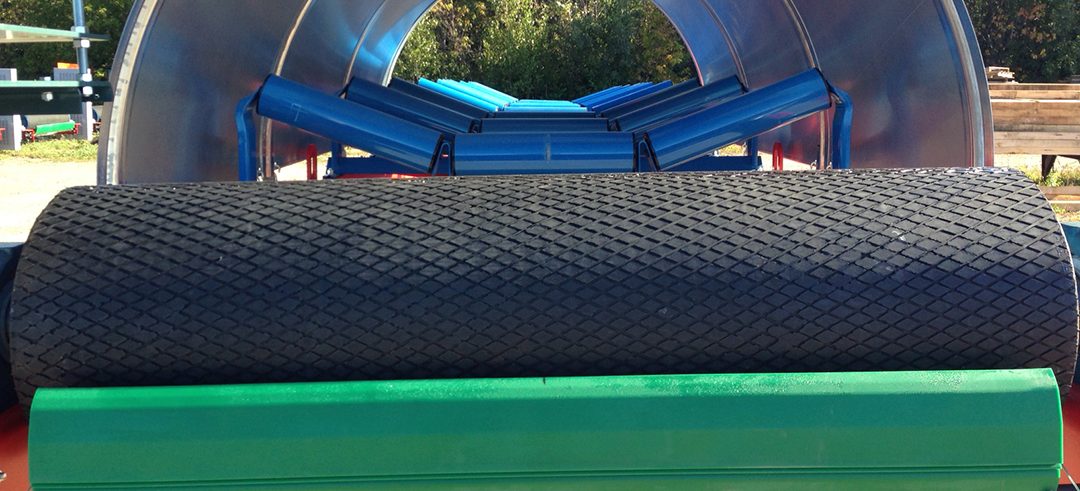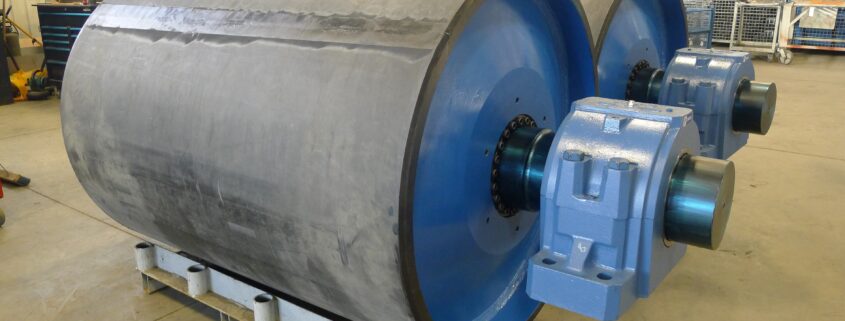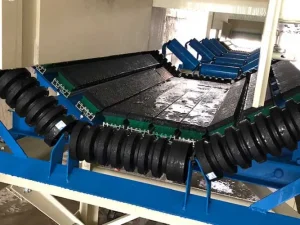Though simple in design, pulleys are an important system for many industries due to their ability to operate in various challenging environments. A conveyor pulley consists of a structure, such as a drum, that is fixed to the shaft by means of locking mechanisms and the shaft is then mounted on to bearings. Although the structure is simple, pulleys can be problematic if the correct type and size of a pulley are not used.

Below, we take a look at four key pulley products that when used in the appropriate application, maximize operational performance.
Drum & Wing Pulleys
Drum and wing pulleys are power transmission components typically used in conveyor and bulk handling applications. Drum pulleys are manufactured out of steel to create a durable shell and are normally crowned to facilitate greater belt contact. Wing pulleys are fabricated with a non-continuous contact surface and open voids that allow loose material to fall.
Drum pulley suppliers offer standard duty, mine duty and engineered class pulleys, manufactured to CEMA standards.
Spiral Drum & Spiral Wing Pulleys
For applications where continuous contact is required, spiral pulleys are often used. Spiral drum pulleys are designed with a pair of steel bars wound around the drum pulley. These bars meet at the centre of the pulley and spiral out to both ends, ensuring constant contact with the belt. This reduces material build-up between the belt and the pulley face, making this system ideal for high tension or high-speed applications where cleaning action is desired.
Helix Wing Pulleys
This specialized design provides a stronger pulley structure while maintaining constant belt contact. The result is reduced vibration and quieter operation with less wear on the belt. This type of pulley is ideal for industries that utilize their pulley system continuously and require a longer service life.
Pulley Lagging
For better traction, the head pulley is usually lagged. The role of the head pulley lagging is to increase friction with a heavy industry conveyor belt and serves as a protective layer. The head pulley, which is located at the discharge point of the conveyor, usually drives the conveyor and can be lagged with either a rubber or ceramic material.
In Summary
The most efficient pulley system depends highly on your application and your industry’s environment. A quality pulley is manufactured with high standards using a heavy schedule pipe and a shell that can absorb more strain to last in even the toughest environments.




